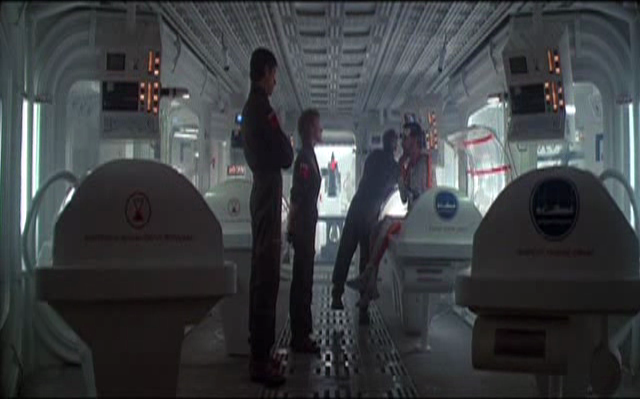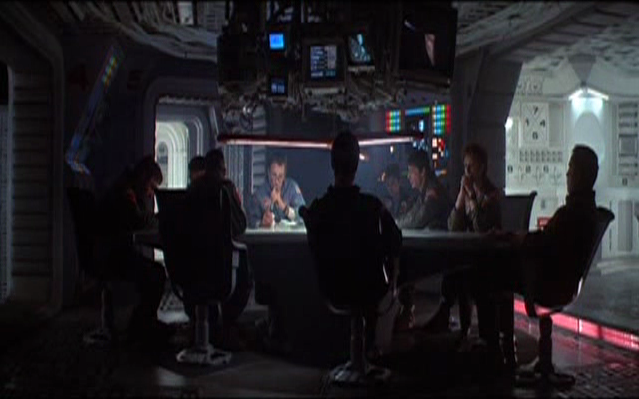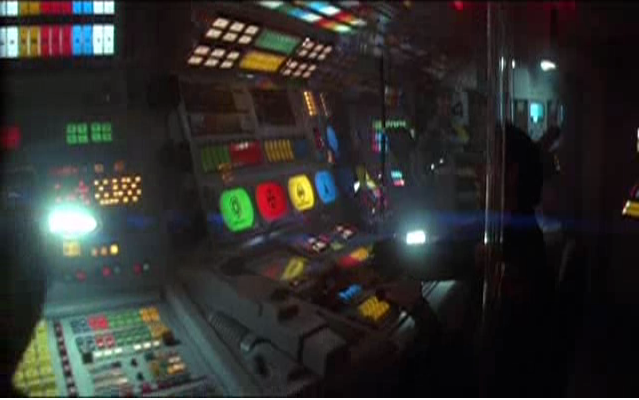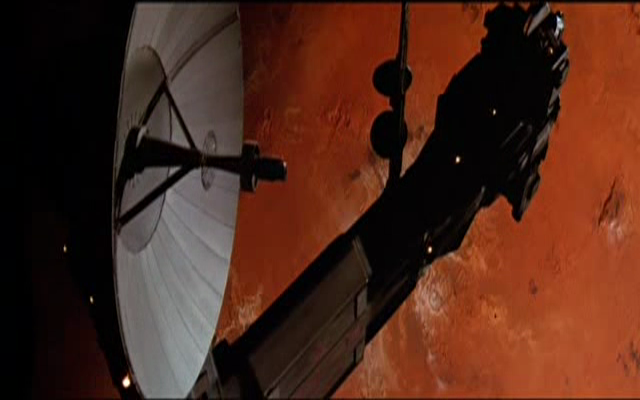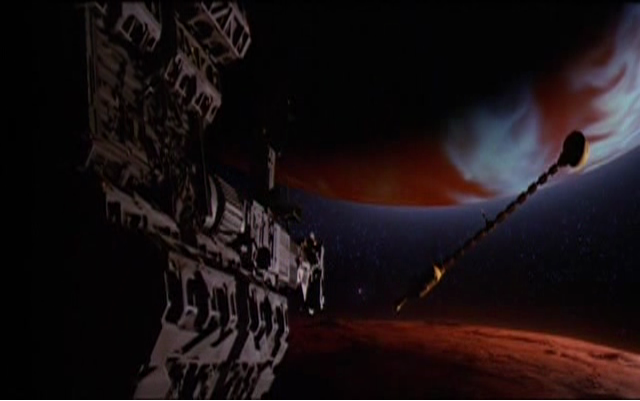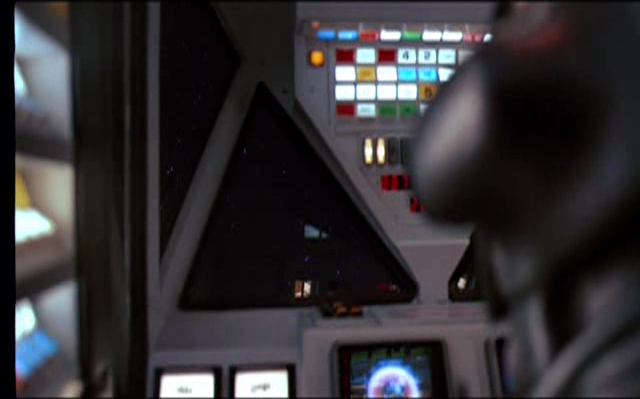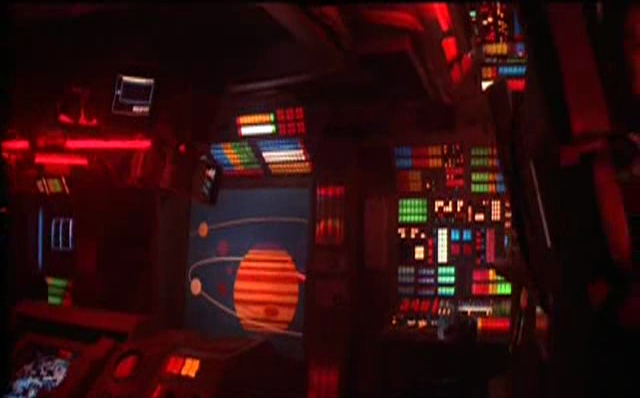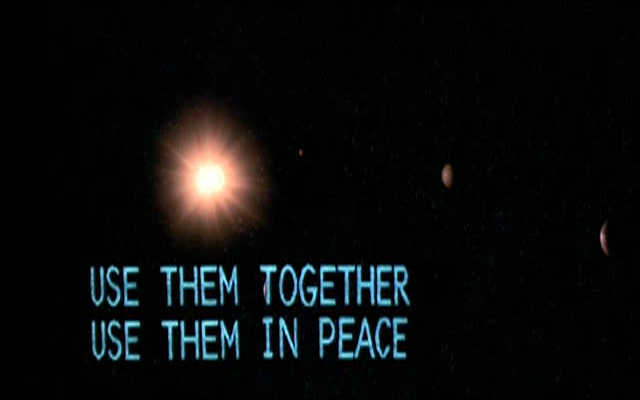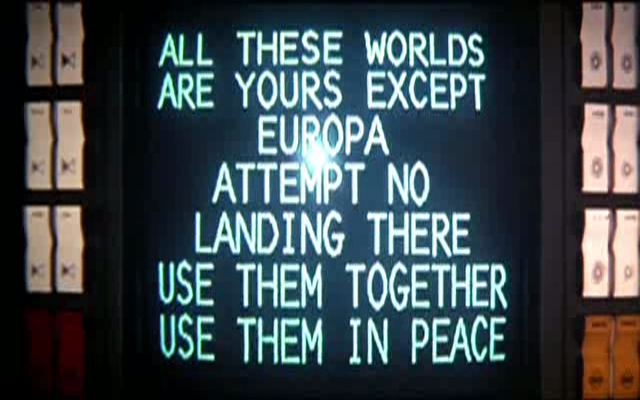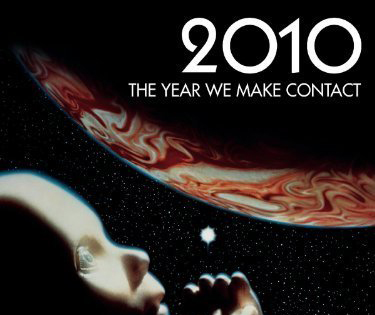
#3 – 2010: The Year we Make Contact
2010: The Year We Make Contact (1984)
Film review #3
Dir. Peter Hyams
The sequel to the classic 2001: A Space Odyssey. If you’re looking for more of the same artistic flare, you may be suprised.
2001 and 2010 are a bit like chalk and cheese, but both of them are equally enjoyable, just probably in different ways. While 2001 has a very artistic direction and production, touching on the notions of the sublime and the numinous with it’s ambitious set design and large budget, 2010 is a more traditional cinematic venture with more a more traditional script and soundtrack.
2010 elaborates more on the concepts introduced in 2001, one of the most fundamental parts of the story is the continuation of the Cold War between the United States and Russia, which was mentioned briefly (one line?) in the original movie becomes one of the main aspects of the story, with the U.S. and Russia on the verge of all out war. Being produced in 1984, when the Cold War was still ongoing, there was an obvious prediction that it would continue into 2001 and 2010 as depicted in their respective movies (Though the novels they were based on were published much earlier).
The sets in 2010 are much darker and murkier than the 2001 designs. Maybe this is due to the ship being mainly set on board a Soviet ship The Alexei Leonov). The controls and monitors of the ship are adorned with Russian letters and characters. When the film switches to the shots of the Discovery (The U.S. Ship) the white, sterile environments could not be any more different. The re-creation of the ship from 2001 is very accurate, though only a few sets of the original ship was recreated probably due to budget constraints.
The Discovery still looks more advanced than the Alexei Leonov, possibly because the Soviet ship is full of a lot of standard sci-fi set aesthetics, such as flashing buttons, and monitors with 80s computer graphics, which show their age when watched now (It’s pretty hard to be convinced that this ship could make it to Jupiter…), though the Discovery has aged much better, as it still looks futuristic and advanced, possibly because 2001 was produced to be as scientifically accurate as possible, whereas 2010 seems to take a few “scientific liberties” to up the action-drama element of the film.
I like that 2010 doesn’t answer all the questions 2001 raises, and where it does, it seems to answer them with more questions, for example, 2001 did not show any aliens on-screen on the advice of Carl Sagan, who famously said that aliens would look so different to us, that trying to create that one screen could never do the truth justice. In the end. HAL becomes a hero of sorts, David Bowman from the original appears, but his appearance seems to suggest he has become a higher life-form of sorts, and the monoliths, shown in the first movie to be somehow responsible for advances in the evolution of man, now makes another impact on the evolution of man, stopping the Cold War and heralding a new era for the Earth. Never explaining what the monoliths are, just what they are capable of. As well as this, new life is just beginning on Jupiter’s moon Europa, who may one day join with humanity the way the east and west have now joined together on Earth.
So overall, another interesting and enjoyable movie. Completely different genre to it’s predecessor, but still tells the story it begins well, and taking on the issues that were at the forefront of the agenda when it was produced. It does not try to emulate 2001’s groundbreaking style (Which would be a folly as far as I’m concerned), but tells it’s own story and leaves a poignant message about the mysteries of our universe.
Finally, should the title of the film be changed to The Year We Made Contact, now 2010 is in the past? Or should it still be make since making contact with aliens is still something we have yet to do? Hmm…


